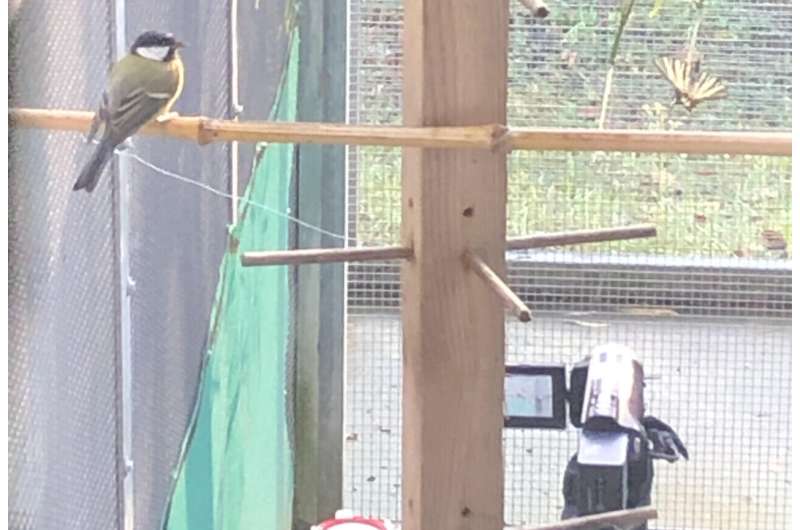Credit: Proceedings of the Royal Society B: Biological Sciences (2022). DOI: 10.1098/rspb.2022.0562
A team of researchers at Muséum National d'Histoire Naturelle, working with a colleague at Station d'Ecologie Theorique et Experimentale du CNRS, has found evidence that suggests butterflies use their tails to distract predators from more vital body parts as a means of survival. In their paper published in Proceedings of the Royal Society B, the group describes experiments they conducted with birds and butterflies in their lab and what they learned from them.
In the wild, birds and bats chase down and catch butterflies as a means for a quick meal. In this new effort, the researchers have found evidence that suggests butterflies have evolved tails that serve to distract birds (and likely bats) from grabbing a main body part. Instead, the predators tend to go for the tail and in so doing wind up with nothing in their mouth but broken tail parts.
Prior research has shown that butterfly tails have evolved independently across many species of both butterflies and moths. In this new effort, the researchers looked into why that has come about. They also note that scientists have not been able to explain why butterflies have tails at all.
Credit: Proceedings of the Royal Society B: Biological Sciences (2022). DOI: 10.1098/rspb.2022.0562
Suspecting that the butterflies use their tails in ways similar to lizards, as decoys, the researchers began their study by capturing and releasing 65 swallowtail butterflies. Each was examined for tail or wing damage. They found that 41% had such damage and all but one included tail damage. Confident they were on the right track they set up and executed an experiment.
The experiment consisted of placing dummy butterflies (real butterfly wings glued to a fake body) in a cage with captured great tits, which are a prime predator of swallowtails. In filming the action using high speed cameras and watching the birds attack the butterflies in slow motion, the researchers found that 43 out of 59 strikes on a butterfly (73%) were on the hind wings (tails). And 39% of the strikes involved both the tail and the colored parts of the butterflies' wings. They also found that the vein that fed the tail was the most fragile part of the wings or tail, allowing the tail to be detached very easily, much like the lizard tail.
The researchers suggest their findings taken together imply that butterflies use their tails as a distraction device, enabling them to survive predator strikes. They conclude by noting that they next plan to find out what sort of cost is involved for the butterflies in losing a tail.
More information: Ariane Chotard et al, Evidence of attack deflection suggests adaptive evolution of wing tails in butterflies, Proceedings of the Royal Society B: Biological Sciences (2022). DOI: 10.1098/rspb.2022.0562
Journal information: Proceedings of the Royal Society B
© 2022 Science X Network
























